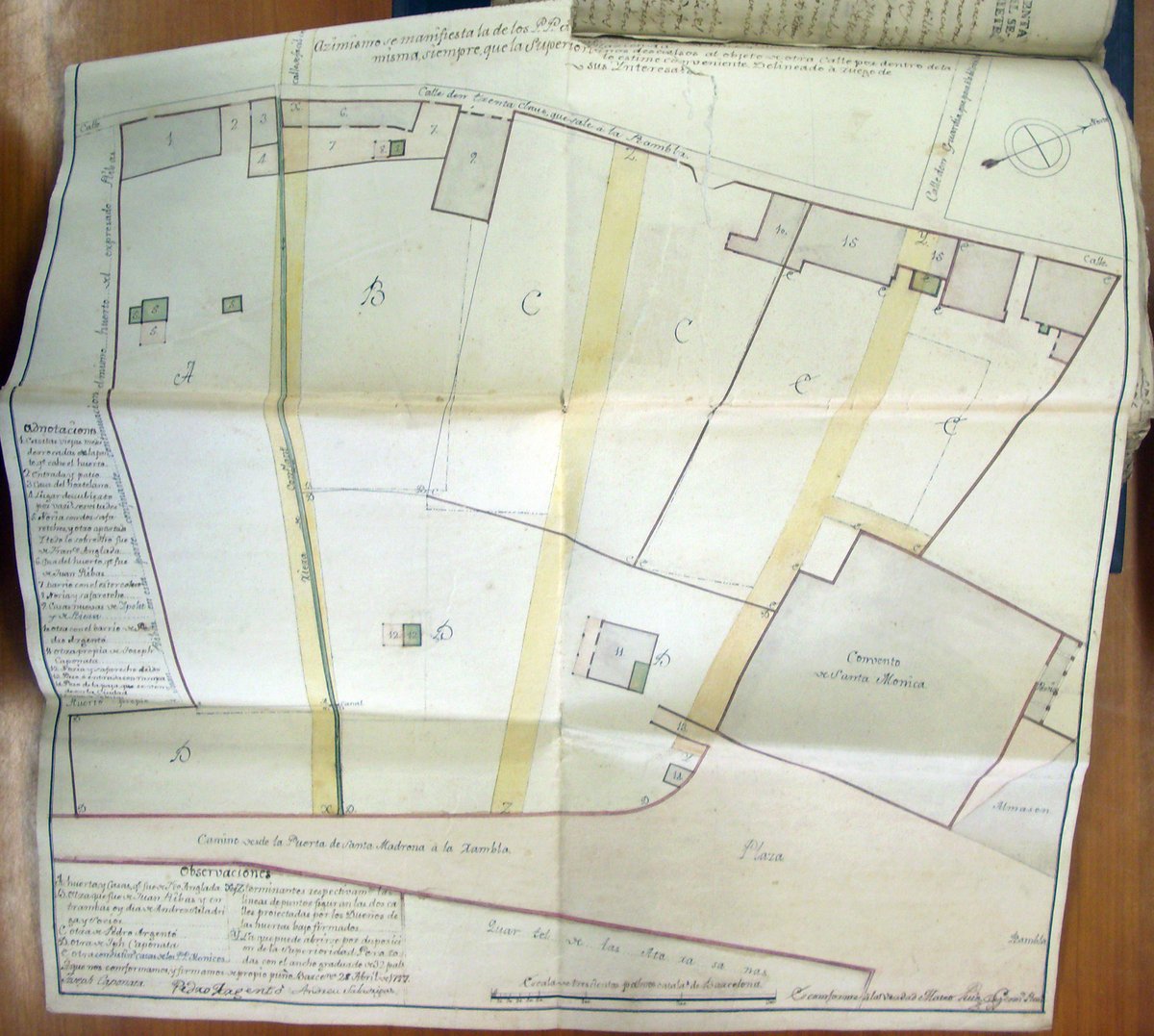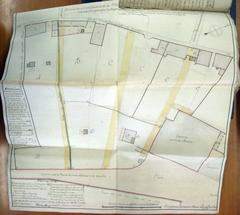
Centre D’Art Santa Mònica: Visiting Hours, Tickets, and Your Guide to Barcelona’s Contemporary Art Landmark
Date: 14/06/2025
Introduction
Located at the vibrant lower end of Barcelona’s iconic La Rambla, the Centre D’Art Santa Mònica (CASM) stands as a unique testament to the city’s rich cultural evolution. Housed in a meticulously preserved 17th-century convent, the centre merges historical architecture with cutting-edge contemporary art, offering a dynamic platform for exhibitions, performances, and community engagement. With its commitment to accessibility, free admission, and strategic integration into Barcelona’s broader cultural network, CASM is an essential destination for art lovers, history enthusiasts, and travelers eager to experience the city’s creative pulse.
This guide provides a detailed overview of CASM’s historical background, architectural significance, visiting details (including hours and ticketing), current programming, accessibility, and practical tips for planning your visit. You’ll also find recommendations for nearby historical sites and resources for further exploration.
For the most up-to-date details, always consult the official CASM website and Barcelona Tourism resources.
Table of Contents
- Historical Evolution
- Architectural Significance
- Visiting Information
- Exhibitions and Events
- Community & Participatory Focus
- Integration with Barcelona’s Cultural Scene
- Nearby Historical Sites & Visitor Tips
- Frequently Asked Questions (FAQs)
- Summary & Planning Resources
- References
Historical Evolution
Origins as a Convent
Founded in the 17th century as the Convent de Santa Mònica, the site originally served the Augustinian order and played a vital religious and social role in the city. The structure was designed in the Catalan Baroque style, notable for its understated elegance and use of local stone. Key features included the church, cloister, and monastic quarters, which together created a serene, light-filled interior—a quality that remains central to its current incarnation (official site).
Secularization and Adaptive Reuse
The 19th-century Ecclesiastical Confiscations of Mendizábal led to the convent’s deconsecration and its repurposing as a warehouse and barracks. These pragmatic uses preserved the building’s integrity until its cultural renaissance in the late 20th century.
Transformation into a Contemporary Arts Centre
In 1984, the Generalitat de Catalunya acquired the property with the vision of establishing a public contemporary arts centre. The 1985–1989 renovation by architects Albert Viaplana, Heliodoro Piñón, and Ricard Mercadé i Rogel is celebrated for blending original stonework with modern interventions in glass and steel. This award-winning preservation and adaptation set a benchmark for cultural restoration in Barcelona (architectural review).
Architectural Significance
CASM is a leading example of adaptive reuse, where historical and modern elements coexist in a compelling dialogue. Visitors experience the play of natural light in the cloister, dramatic glass walkways, and a sculptural steel staircase that acts as both a connector and a focal point. The flexible exhibition halls accommodate a spectrum of artistic practices, from large-scale installations to digital art.
The building’s transformation has influenced similar projects in Barcelona and beyond, reinforcing the city’s reputation for innovative cultural spaces.
Visiting Information
Opening Hours
- Tuesday to Saturday: 11:00 AM – 9:00 PM
- Sundays and Holidays: 11:00 AM – 5:00 PM
- Closed: Mondays and major public holidays (including 25 & 26 December, 1 & 6 January, 7 April, and 1 May)
(source)
Tickets and Admission
- Admission: Free for all exhibitions and most events
- Special Events/Workshops: May require advance reservation or a fee—check the official calendar
(source)
Accessibility
- Fully accessible via ramps, elevators, and adapted restrooms
- Service animals welcome
- Free Wi-Fi, cloakroom, and information desk available
Getting There
- Address: La Rambla, 7, 08002 Barcelona, Spain
- Metro: L3 (Drassanes or Liceu stations)
- Bus: Several lines stop nearby
- Car: Public parking nearby (limited availability due to city centre location)
Exhibitions and Events
Current and Upcoming (June–September 2025)
- Edward Weston (11 June – 31 August 2025): Major retrospective of the American photographer (source)
- Joan Andreu Puig Farran: The Troubled Decade (1929–1939): Visual exploration of Spain’s turbulent years (source)
- Group and Thematic Exhibitions: Interdisciplinary shows blending visual arts, architecture, and digital media; check the official calendar for updates
Past Highlights
- El surrealismo en Cataluña, 1924–1936: Groundbreaking opening exhibition (source)
- Unseen by Jessica Lange: Notable photographic showcase
Public Programs and Special Events
- Free guided tours: Saturdays at 6 PM, Sundays at 12 PM (booking recommended)
- Workshops, artist talks, performances, and interactive installations
- Residency programs: “Les Mòniques” (21 residencies awarded in 2025) (source)
- Major annual events: La Nit dels Museus, with extended hours and unique programming (source)
Digital Initiatives
- Arxiu Dossiers: Digital archive spotlighting Catalan artists
- Science Blog: Exploring intersections of art, science, and technology
- Virtual tours, live-streamed talks, and hybrid workshops
Community & Participatory Focus
CASM is rooted in collective creation and community involvement. “Guilds” and artist collectives collaborate on projects, utilizing the centre’s resources to shape new cultural frameworks. The participatory approach ensures that both established and emerging voices are included in the creative process.
The centre’s programming is process-oriented, emphasizing research, experimentation, and public engagement. Visitors often have the opportunity to interact directly with artists, attend open workshops, and contribute to collaborative installations.
Integration with Barcelona’s Cultural Scene
As a key member of the Raval Cultural Project—a network of over 300 venues—CASM plays a vital role in Barcelona’s cultural ecosystem. It regularly collaborates with international festivals, universities, and artists, bridging local creativity with global trends.
Nearby Historical Sites & Visitor Tips
Nearby Attractions:
- Columbus Monument: Iconic landmark at the base of La Rambla
- Museu Marítim: Maritime history museum housed in historic shipyards
- Mercat de la Boqueria: Famous food market, 10 minutes north
- Gothic Quarter (Barri Gòtic): Medieval streets and plazas
- Port Vell: Waterfront area perfect for strolls
Visitor Tips:
- Visit on weekday mornings for a quieter experience
- Non-flash photography is permitted in most areas; always check signage
- Guided tours and group visits should be booked in advance
- Multilingual exhibition texts (Catalan, Spanish, English); ask for language support if needed
- Families and children welcome; interactive and educational programs available
Frequently Asked Questions (FAQs)
Q: What are the Centre D’Art Santa Mònica visiting hours?
A: Tuesday to Saturday, 11:00 AM – 9:00 PM; Sundays and holidays, 11:00 AM – 5:00 PM; closed Mondays and select holidays.
Q: Do I need a ticket to visit?
A: General admission is free; special events may require registration or a fee.
Q: Is the centre accessible for visitors with reduced mobility?
A: Yes, with ramps, elevators, and adapted restrooms.
Q: Are guided tours available?
A: Yes, free tours are offered on weekends; booking is recommended.
Q: Can I take photos inside?
A: Non-flash photography is allowed in most spaces; check for restrictions.
Q: What public transport options are best?
A: Metro L3 (Drassanes or Liceu), multiple bus lines, and on-foot access from La Rambla.
Summary & Planning Resources
Centre D’Art Santa Mònica is a cornerstone of Barcelona’s contemporary art scene, distinct for its fusion of historical heritage and modern creativity. With free access, a central location, and multidisciplinary programming, it welcomes a diverse audience to engage with the city’s artistic and cultural life. Enhance your visit by exploring nearby historical sites, participating in workshops, and staying updated via the official calendar.
References and Further Reading
- Centre D’Art Santa Mònica Official Site
- Architectural Review on Centre D’Art Santa Mònica Renovation
- Arts Santa Mònica Official Website
- Barcelona Tourism: Arts Santa Mònica
- CASM Event & Exhibitions Calendar
- Santa Mònica Residencies and Programs
- Edward Weston & Joan Andreu Puig Farran Exhibitions
- Past Highlights and Surrealism Exhibition
- Visitor Practicalities






























































